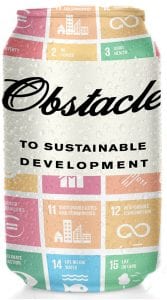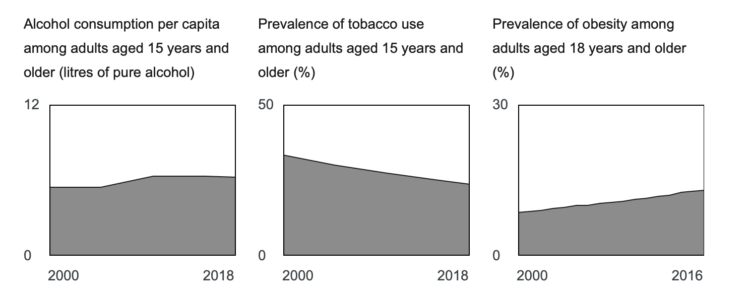World Health Statistics Illustrate Increase In Global Alcohol Per Capita Use
The World Health Organization’s annual World Health Statistics function as a check-up on the world’s health and illustrate how countries are doing across key health and health system indicators. Regarding alcohol harm, the latest report illustrates a problematic trend: an anticipated increase in global alcohol per capita consumption by 2025.
Furthermore, while there is progress in some indicators, this year’s statistics show there remain inequalities and progress is too slow to achieve the Sustainable Development Goals on time according to the Agenda 2030.
As such, latest data is revealing important lessons in terms of progress made towards the Sustainable Development Goals and gaps to fill.
The good news is that people around the world are living longer and healthier lives.
The bad news is the rate of progress is too slow to meet the Sustainable Development Goals and will be further thrown off track by COVID-19,” said Dr Tedros Adhanom Ghebreyesus, WHO Director-General, as per WHO Website.
The report shows life expectancy has increased globally, but unequally. There are gaps which need to be covered in immunization services, prevention and treatment of Non Communicable Diseases (NCDs), access to quality health services, inability to pay for healthcare, lack of access to basic healthcare, sanitation, drinking water. Lower and middle income countries are facing inequalities compared to high income countries.
The statistics highlight the need for stronger data and health information systems. For almost a fifth of countries, over half of the key indicators have no recent primary or direct underlying data. This affects countries’ ability to understand population health trends, develop appropriate policies, allocate resources and prioritize interventions.
The COVID-19 pandemic has brought the gaps and inequalities in health into sharper focus.
The message from this report is clear: as the world battles the most serious pandemic in 100 years, just a decade away from the SDG deadline, we must act together to strengthen primary health care and focus on the most vulnerable among us in order to eliminate the gross inequalities that dictate who lives a long, healthy life and who doesn’t,” said Dr Samira Asma, Assistant Director General at WHO, as per WHO Website.
Alcohol obstacle to SDGs
Alcohol is a major obstacle to achieving 14 out of 17 SDGs.
Alcohol use is one of the main risk factors for NCDs. According to WHO data, In 2016, 71% of all deaths worldwide were attributable to NCDs, with the majority of the 15 million premature deaths (85%) occurring in low and middle-income countries.
 Following are the key findings on alcohol use in this year’s World Health Statistics:
Following are the key findings on alcohol use in this year’s World Health Statistics:
- Alcohol resulted in over 3 million deaths in 2016 (5.3% of all death).
- Over three quarters of alcohol-related deaths were among men.
- Worldwide per capita alcohol consumption among people over 15 years was 6.2 litres in 2018.
- While worldwide per capita alcohol consumption has been stable since 2010, current trends and projections point to an anticipated increase in global alcohol per capita by 2025, largely driven by increases in the Americas, South-East Asia and the Western Pacific regions.
- The WHO European Region continues to have the highest per capita consumption in the world (9.7 litres per capitain 2018).
- Across all regions, women are less likely than men to use alcohol and those who do use alcohol tend to consume less.
- Effective alcohol policy solutions can reduce alcohol consumption. Those include increasing taxes on alcoholic beverages, bans or comprehensive restrictions on alcohol advertising, restricting the physical availability of alcohol, enacting and enforcing driving under the influence of alcohol laws, and providing brief psychosocial interventions.
Originally, in 2013, WHO Member States voluntarily committed themselves to a 10% reduction of per capita alcohol use by 2025. But as the latest World Health Statistics show, this voluntary target is moving further out of reach. Therefore, alcohol prevention and control needs to be prioritized by countries in their efforts to achieve health and development for all.
—
For further reading:
Access a visual summary of the World Health Statistics here.
Access the full report of the World Health Statistics here.
Read here (PDF) more about the voluntary commitment of Member States to reduce per capita alcohol use until 2025 by at least 10%.
